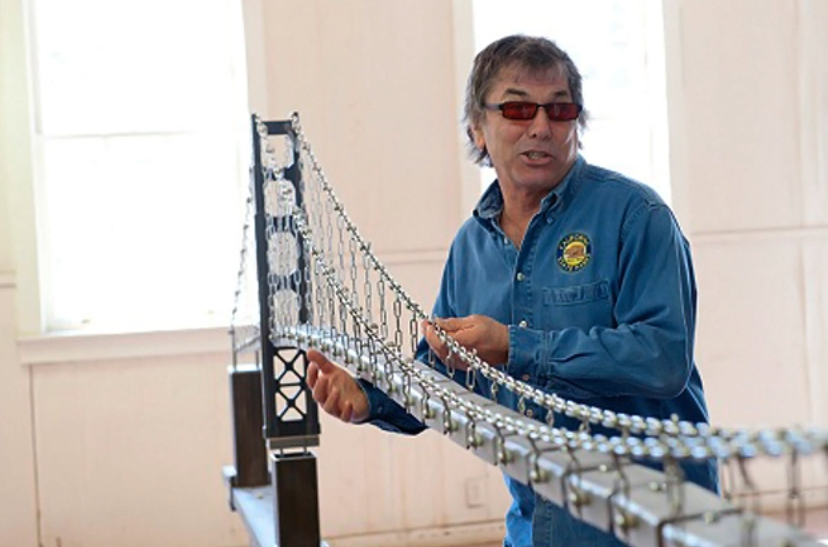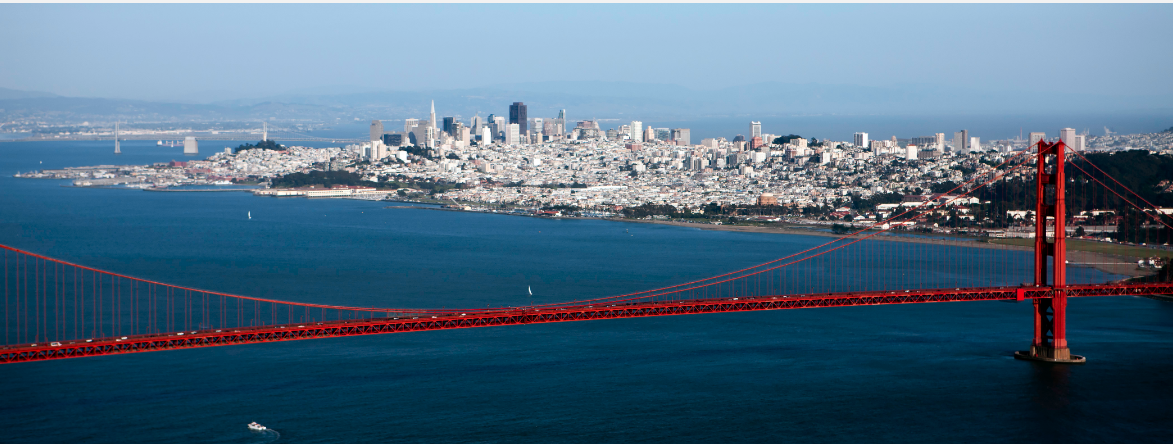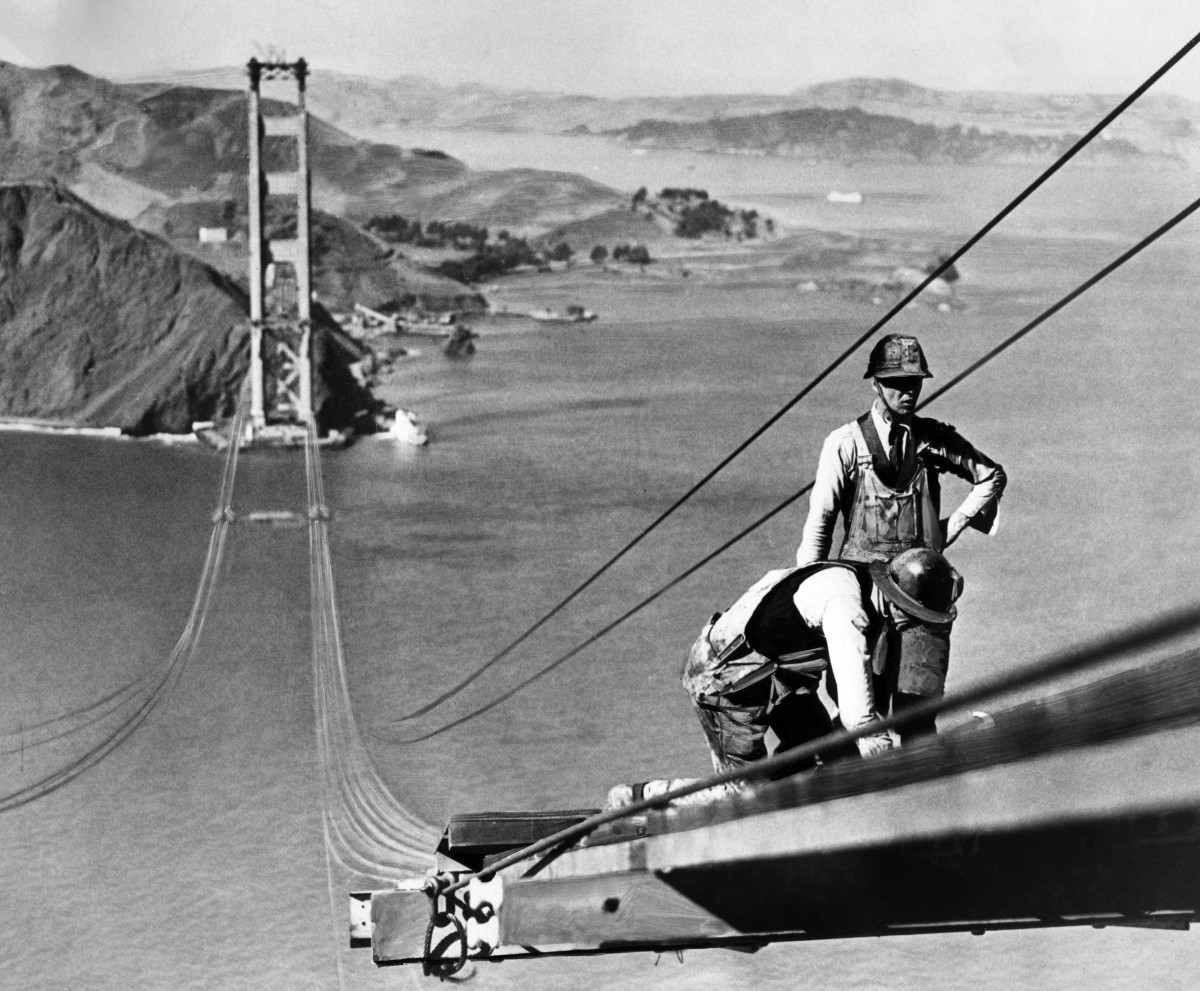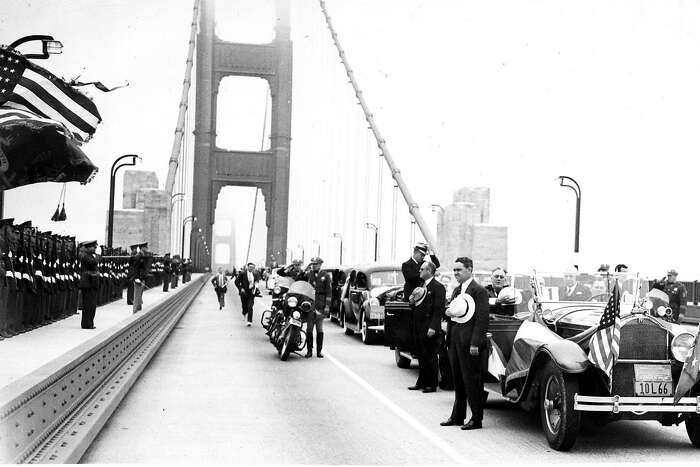Golden Gate Bridge
Drums & Space | July 14th | Dead & Company | San Francisco
“The sounds of the great Golden Gate Bridge, a colossus of modern architecture, a trademark symbol of our city. Its song, its sound, and its vibration in the universe- a multidimensional instrument. It is a giant wind harp blowing in the wind connecting two landmasses. There is the traffic and there are people walking and there is bay nature and there is the bridge itself. It sways and dances its life away, on and on and on and on. This sound world should be heard and allow us into the magic of this wonder.” – Steven Feld

The America’s Cup 2013 – 24 Hours in the Life of the Golden Gate
The Golden Gate Bridge vibrates. From its toes (earth, water) to its thighs (pillars of cement and steel), to its torso and crown (high wires, air, sky), it is made of vibration. Its vibratory life has inspired and been the subject of many pictures, stories and songs. But what of its life in sound?

The bridge connects. It links space and place above, below and across; it spans landscape and memory, it joins life and lore. Passages and passengers below in boats, on top of its deck in cars, and above in planes, envelop the bridge. How do they hear it? How do they remember it? How do they imagine the sound of its being? How do they imagine the conditions of its emergence?
Imagine the Golden Gate Bridge and the San Francisco Bay across which it spans, as the heart pulse of an ancient organism. Material mass rising from water and earth, enveloped by living systems, affecting, and being affected by them. Imagine the bridge and Bay as a communication hub, a transit device supported by and supporting multiple movements. Imagine the bridge spanning the bay the way you would imagine a rainforest, as a mass rising from earth to canopy, responding to weather, to the activities of all the surrounding flora and fauna. Imagine the bridge and bay as a span of connections, mental, material, historical, contemporary. Imagine this environment over a period of twenty-four hours, its movements shaped by and shaping the rhythms of the winds, the birds, the cars, the boats, water.
Now imagine this as a soundscape, as an acoustic ecology, one sound layering onto and rolling over another. Then imagine an acoustic eco-world horizontally, each sound leading and trailing another. Then imagine the vertical and horizontal at the same time, an eco-world as Papua New Guinea’s rainforest dwellers call a “lift-up-over sounding” with each acoustic layer densely woven into and piling onto others. Imagine this environment and ecology of sound, a complete space-time, where acoustic height, depth, distance, reach, mass, motion, density are simultaneously audible. Imagine hearing the bridge and bay as intensely as you hear an intimate whisper, a scary scream, an ever-present low-level hum, a Doppler roar. Imagine hearing the bridge and bay at the same time like a voice in a dream and like an adventure movie for ears.
History
The Golden Gate Bridge, suspension bridge spans the Golden Gate in California to link San Francisco with Marin county to the north. Upon its completion in 1937, it was the tallest and longest suspension bridge in the world. The Golden Gate Bridge came to be recognized as a symbol of the power and progress of the United States, and it set a precedent for suspension-bridge design around the world. Although other bridges have since surpassed it in size, it remains incomparable in the magnificence of its setting and is said to be the most photographed bridge in the world. It carries both U.S. Route 101 and California State Route 1 (Pacific Coast Highway) across the strait and features a pedestrian walkway.

The bridge’s orange vermilion color, suggested by consulting architect Irving Morrow, has a dual function, both fitting in with the surrounding natural scenery and being clearly visible to ships in fog. At night the bridge is floodlit and shines with a golden luminescence that reflects off the waters of the bay and creates a magical effect.
It’s construction, under the supervision of chief engineer Joseph B. Strauss, began in January 1933 and involved many challenges. The strait has rapidly running tides, frequent storms, and fogs that made construction difficult. During one such fog on August 14, 1933, a cargo vessel collided with the access trestle, causing serious damage. Workers also had to contend with the problem of blasting rock under deep water to plant earthquake-proof foundations. A movable safety net, innovated by Strauss, saved a total of 19 men from falling to their deaths during construction. However, the safety net failed on February 17, 1937, when it gave way under the weight of a scaffolding collapse; of the 13 men who were on the scaffolding, one jumped clear, two survived the fall into the water, and 10 were killed. One other worker fell to his death during the construction, for a total of 11 worker deaths over four years.
The bridge opened to vehicular traffic on May 28, 1937, under budget and ahead of schedule. The main span, 4,200 feet long, is suspended from two cables hung from towers 746 feet high; at midpoint the roadway is 265 feet above mean high water.
Until the completion of the Verrazzano-Narrows Bridge in New York City in 1964, it had the longest main span in the world.

As part of the weekend of celebrations in honor of the Golden Gate Bridge’s 75th Anniversary, Mickey Hart and the Mickey Hart Band closed the festivities with a free concert. The show opened with Mickey playing a dynamic model of the Golden Gate Bridge created by the Exploratorium and sonified by Exploratorium exhibit developers in collaboration with Mickey Hart.
The model bridge that Mickey played is located outside the SF Exploratorium.
Learn more about this great place to visit here – https://www.exploratorium.edu/
